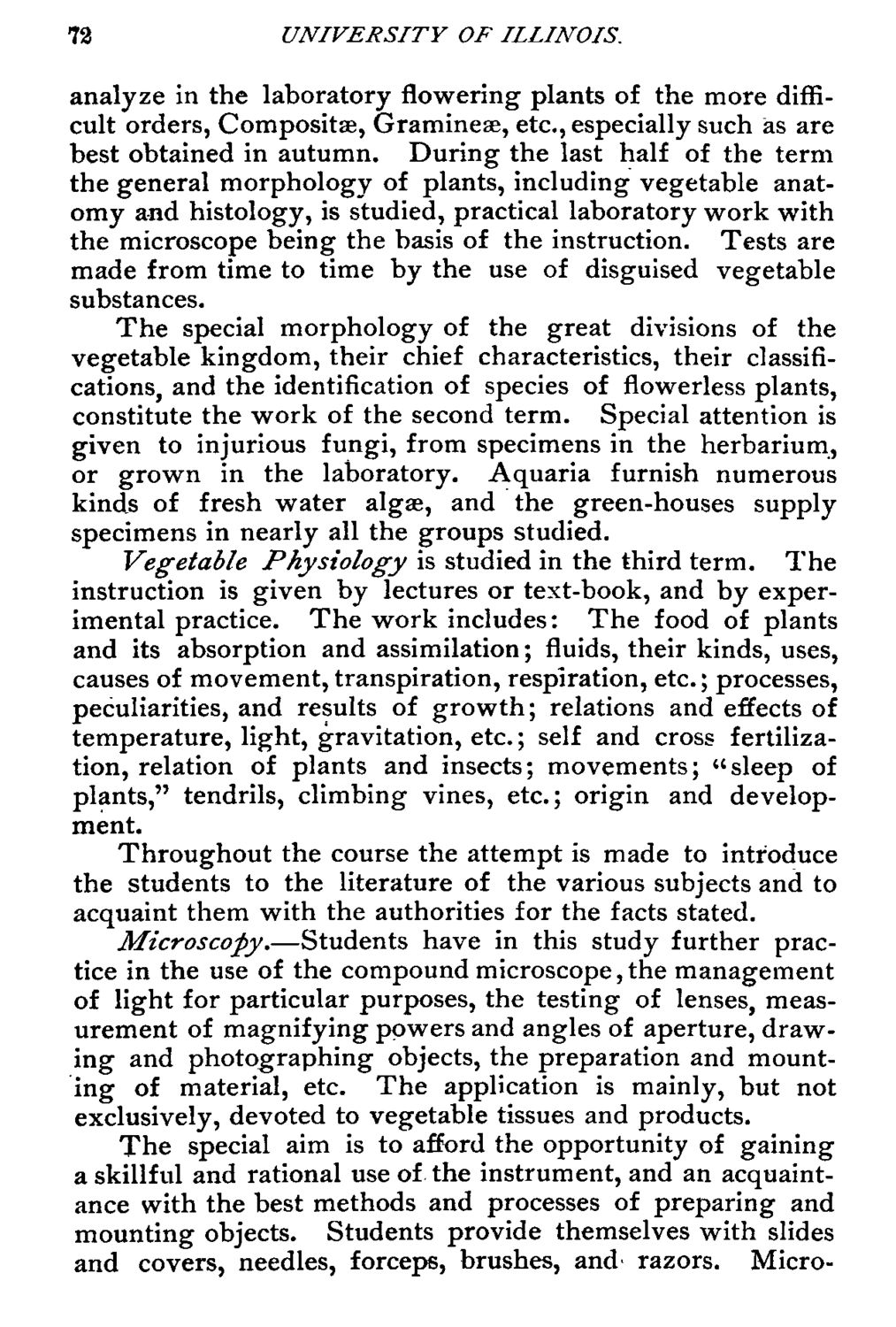| |
| |
Caption: Course Catalog - 1887-1888
This is a reduced-resolution page image for fast online browsing.

EXTRACTED TEXT FROM PAGE:
72 UNIVERSITY OF ILLINOIS. analyze in the laboratory flowering plants of the more difficult orders, Composite, Graminese, etc., especially such as are best obtained in autumn. During the last half of the term the general morphology of plants, including vegetable anatomy and histology, is studied, practical laboratory work with the microscope being the basis of the instruction. Tests are made from time to time by the use of disguised vegetable substances. The special morphology of the great divisions of the vegetable kingdom, their chief characteristics, their classifications, and the identification of species of flowerless plants, constitute the work of the second term. Special attention is given to injurious fungi, from specimens in the herbarium, or grown in the laboratory. Aquaria furnish numerous kinds of fresh water algae, and the green-houses supply specimens in nearly all the groups studied. Vegetable Physiology is studied in the third term. The instruction is given by lectures or text-book, and by experimental practice. The work includes: The food of plants and its absorption and assimilation; fluids, their kinds, uses, causes of movement, transpiration, respiration, etc.; processes, peculiarities, and results of growth; relations and effects of temperature, light, gravitation, etc.; self and cross fertilization, relation of plants and insects; movements; "sleep of plants," tendrils, climbing vines, etc.; origin and development. Throughout the course the attempt is made to introduce the students to the literature of the various subjects and to acquaint them with the authorities for the facts stated. Microscopy.—Students have in this study further practice in the use of the compound microscope,the management of light for particular purposes, the testing of lenses, measurement of magnifying powers and angles of aperture, drawing and photographing objects, the preparation and mounting of material, etc. The application is mainly, but not exclusively, devoted to vegetable tissues and products. The special aim is to afford the opportunity of gaining a skillful and rational use of the instrument, and an acquaintance with the best methods and processes of preparing and mounting objects. Students provide themselves with slides and covers, needles, forceps, brushes, and' razors. Micro-
| |